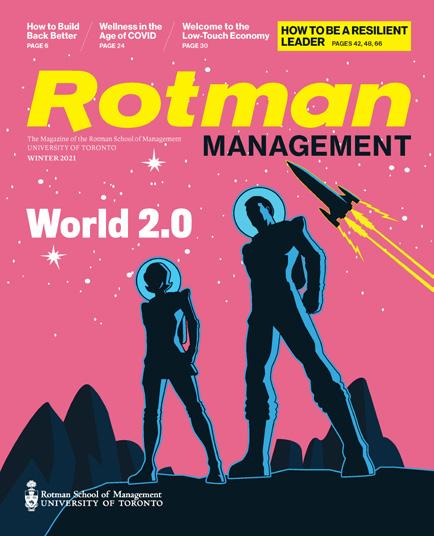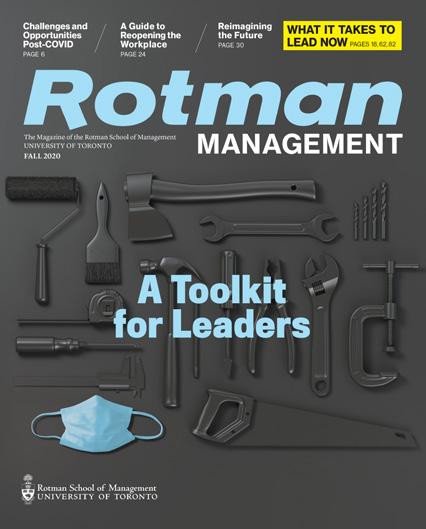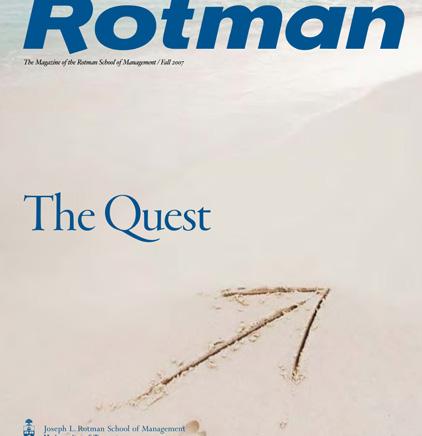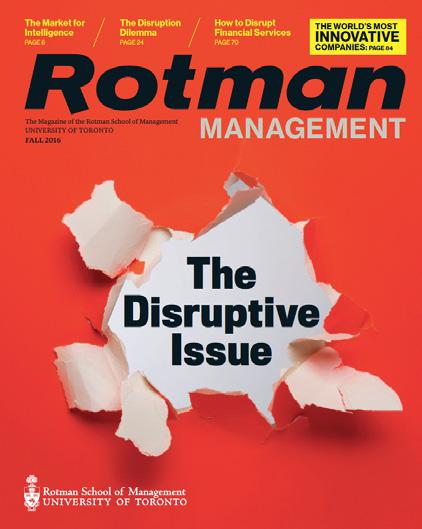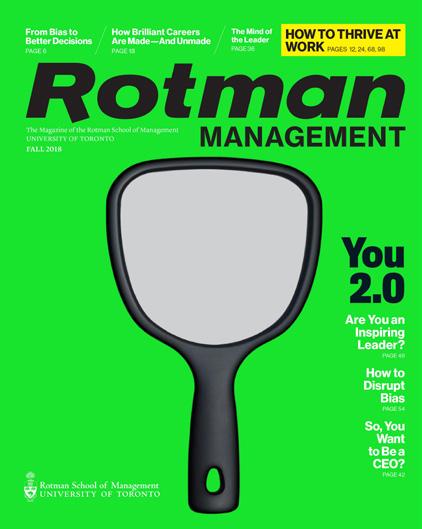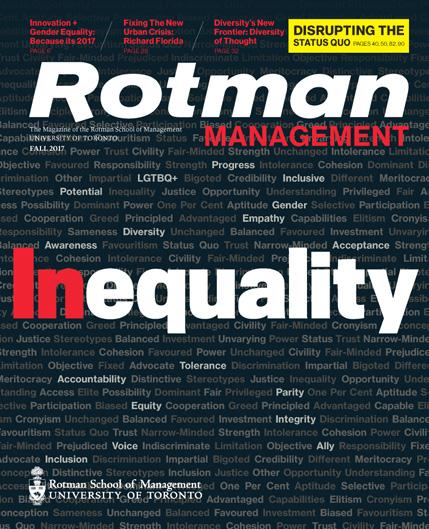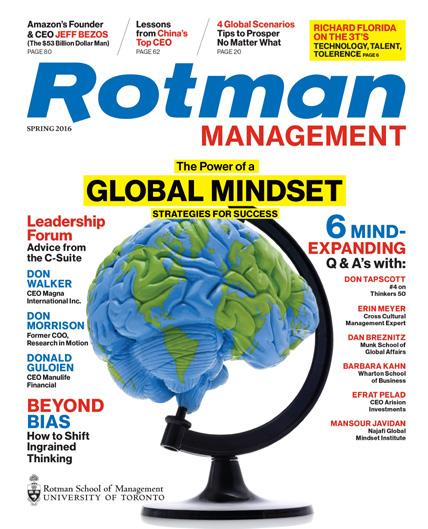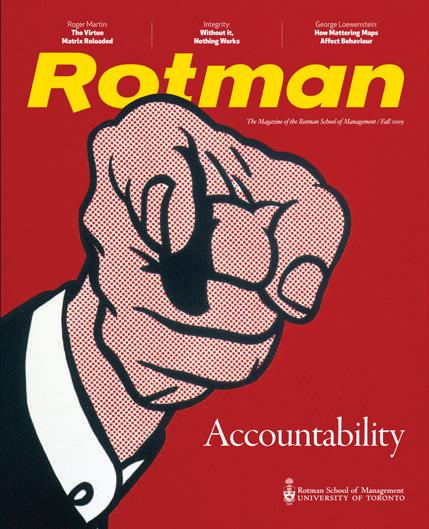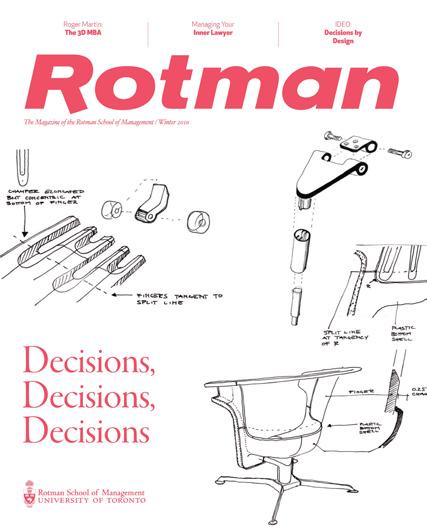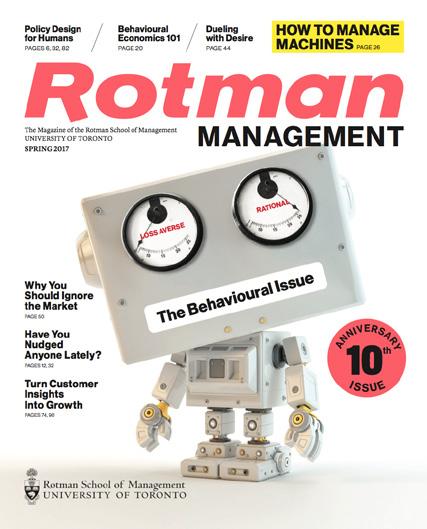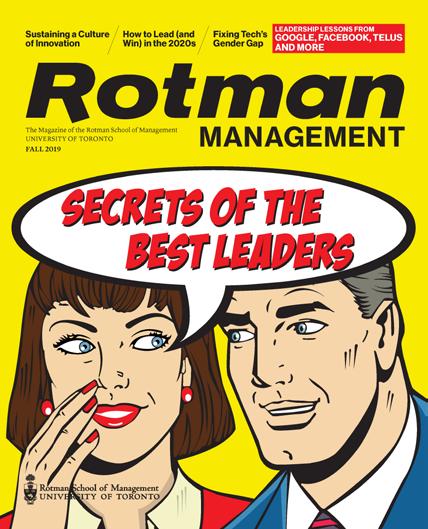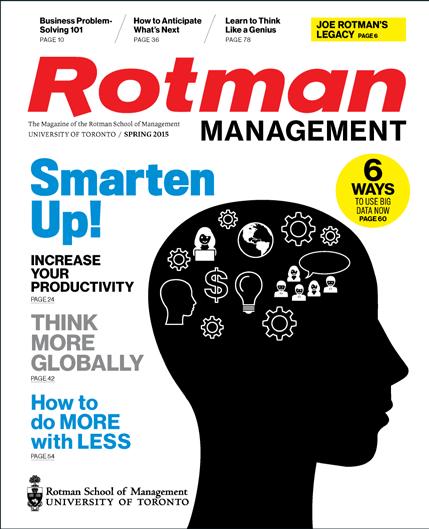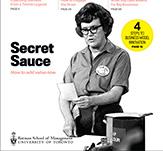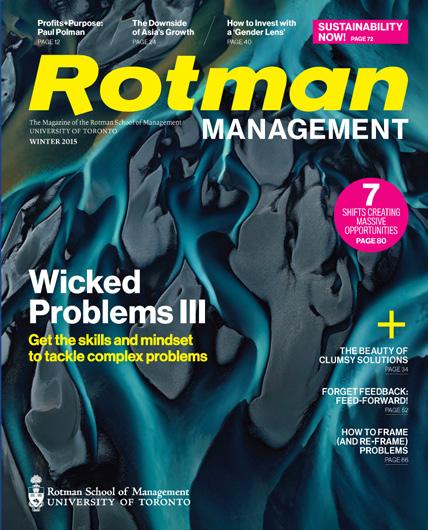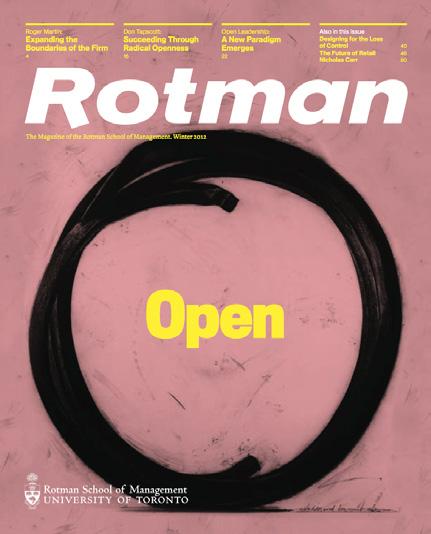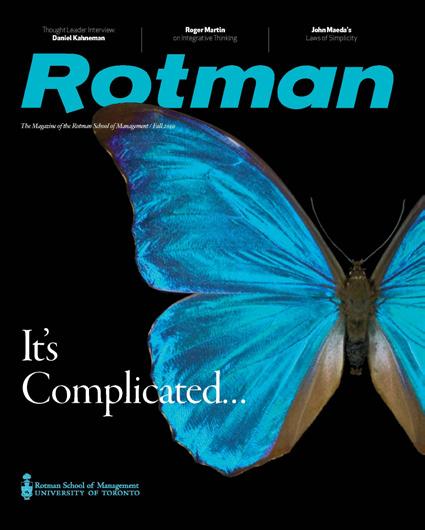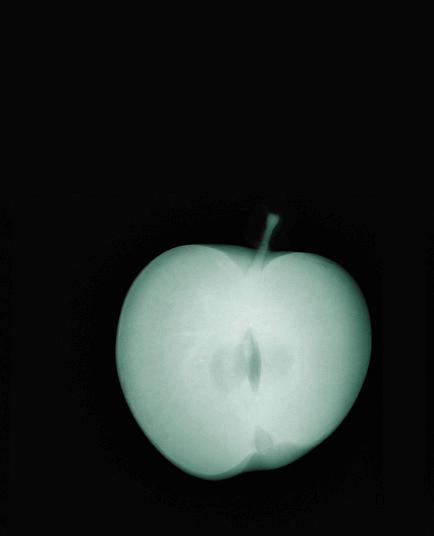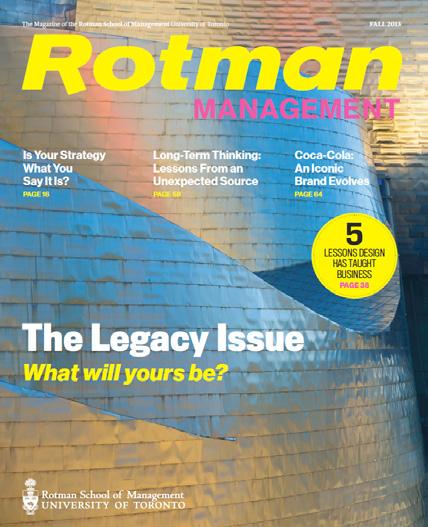




WHY ARE SOME PEOPLE more successful than others? One obvious answer is tal ent; another is opportunity. But even peo ple who have comparable levels of talent and opportunity often enjoy strikingly dif ferent levels of success.
Applying the scientific method to this age-old question has yielded important new insights regarding the determi nants of both everyday success and extraordinary achieve ment. What is lacking — and of central interest to me as a researcher — is an integrative framework for understanding the requirements for these two kinds of success.
The idea that the determinants of everyday success differ from the determinants of extraordinary achievement goes back to the earliest days of psychology. Sir Francis Gal ton (1822-1911) contrasted ‘self-denial’ in the face of ‘hourly temptations’ with what he considered, other than talent, to be the essential features of high achievers — namely, “zeal [and] the capacity for hard labour.” What Galton termed ‘self-denial’ is now referred to as self-control, which includes both inhibiting strong, but ultimately undesirable impulses and activating weak, but ultimately desirable impulses.
Galton’s conception of zeal and the capacity for hard work corresponds to what I refer to as grit — a newer con
struct defined as ‘passion for and perseverance toward especially long-term goals’. Today, ‘self-control’ and ‘grit’ are sometimes used interchangeably. However, despite overlap in key underlying psychological processes, they are not identical.
Like Galton, both Sigmund Freud and William James speculated that the capacity to regulate attention, emotion and behaviour was essential to everyday success. Studies have confirmed that higher levels of self-control earlier in life predict later academic achievement and attainment, pro-social behaviour, employment, earnings, savings, and physical health. In fact, self-control predicts many conse quential outcomes at least as well as either general intelli gence or socioeconomic status.
The psychological processes that underlie self-control, once referred to as ‘willpower’, are now coming into focus. It is now understood that self-control is required when there is a conflict between two possible action tendencies (i.e., im pulses) — one corresponding to a momentarily alluring goal and the other corresponding to a more valued goal whose benefits are deferred in time, more abstract, or otherwise more psychologically distant. Regardless of the particular type of impulse that is engaged (e.g., gobbling up one sweet and chewy marshmallow immediately vs. waiting for two;
watching television vs. going to the gym), it seems that com mon prefrontal brain areas are involved in successful topdown regulation.
In addition to directly modulating bottom-up impuls es, both children and adults are capable of deploying an array of cognitive and behavioural strategies seconds, min utes, or even hours in advance of confronting temptations. In general, the capacity to exercise self-control appears to improve from infancy through adulthood, in parallel with the maturation of prefrontal brain areas and metacognitive abilities (‘thinking about thinking’).
A newer literature has begun to explore the conse quences of pursuing a passionate interest with determina tion and effort over the course of years. Studies show that grit predicts the completion of challenging goals despite obstacles and setbacks. For instance, in my own research I have found that grittier high school juniors in Chicago public schools are more likely to graduate on time one year later; grittier cadets are more likely than their less gritty peers to make it through the first arduous summer at West Point; grit tier novice teachers are more likely to stay in teaching, and among the teachers who do stay, those who are grittier are more effective.
Elsewhere, researchers found that in the National Spelling Bee, grittier competitors accumulate more hours of deliberate practice over the course of years, which in turn fully mediates the effect of grit on final ranking. Related research has identified ‘harmonious passion’ (i.e., the in ternalization of a passionate activity into one’s identity) as
a predictor of deliberate practice and, in turn, performance.
Many other studies of expert performers in diverse domains have found that thousands of hours of extremely effortful deliberate practice are prerequisite for achieving world-class levels of skill. If, as Woody Allen has suggest ed, ‘showing up’ is crucial to success in any endeavour, and if highly effortful, focused practice is a necessary means to improving in skill, then it may be that grit predicts high achievement by inclining individuals to both show up and work very hard, continuously, towards a highly valued goal for years.
It is perhaps no wonder that self-control and grit are often used interchangeably. These two determinants of success are highly correlated, and both predict success outcomes over and above intelligence. However, some paragons of self-control lead undistinguished lives devoid of a focused life-long passion, and some gritty and exceptionally suc cessful people are famously undisciplined in life domains other than their chosen passion.
How are self-control and grit similar, and how are they different? My colleagues and I propose that both their simi larities and their differences can be understood within a Hierarchical Goal Framework (see Figure One). Following prominent motivational accounts, we assume that goals are typically organized hierarchically, with lower-order goals serving higher-order goals. Lower-order goals are more numerous, context specific, short-term, and substitutable,
Self-control predicts consequential life outcomes at least as well as either general intelligence or socioeconomic status.
whereas higher-order goals are typically fewer in number, more abstract, more enduring, and more important to the individual. At any level in the goal hierarchy, goals are more likely to be activated if they are appraised as being both fea sible and desirable.
Individuals can have not only multiple goals but also multiple goal hierarchies, and this multiplicity of motives can lead to conflicts. Within this framework, self-control refers to the successful resolution of a conflict between two action impulses — one that corresponds to a goal that is more valued in the moment, and another that corre sponds to a goal that is of greater enduring value.
For example, Monday morning may find a professor torn between editing a section of her graduate student’s manuscript or, alternatively, checking Us Weekly for the latest Hollywood gossip. The former action is more valu able in the long run, advancing the goals of supporting her student’s development and of publishing empirical stud ies. In contrast, the rival action is momentarily more allur ing — guaranteed to be effortless and amusing — but alas, in the long run, less valuable insofar as it merely advances the goal of having fun. So, whether by modulating her ac tion tendencies in the heat of the moment or, preferably, by deploying cognitive and behavioural self-control strategies earlier in time, the professor hopes to exercise self-control and choose the manuscript over the tabloid.
In our framework, grit entails having a dominant super ordinate goal and tenaciously working toward it in the face of obstacles and setbacks. This superordinate goal sits at the
Goals are typically organized hierachically, with fewer highlevel goals and more numerous low-level goals. The latter are associated with action tendencies, broadly construed to include attention, emotion and behaviour.
top of a well-organized goal hierarchy in which lower-order goals are tightly aligned with the superordinate goal, and these lower-order goals in turn give rise to effective actions that advance the individual toward the superordinate goal.
When faced with setbacks, gritty individuals find a way forward by ‘sprouting’ new lower-order goals (or actions). For instance, if a grant proposal or manuscript is rejected, tears may be shed, but soon enough, another funder or journal outlet is identified and pursued. In other words, in a gritty individual’s domain of passionate interest, goals or ac tions deemed unfeasible are met with the response of an ac tive search for — or even invention of — viable alternatives.
Viewed in this light, it is evident that self-control and grit both involve the defense of valued goals in the face of adversity. Where they principally differ is in the types of goals that are being defended, the nature of the ‘enemy’, and the timescale that is involved. Self-control is required to adjudicate between lower-level goals entailing necessar ily conflicting actions. One cannot eat one’s cake and have it later, too. In contrast, grit entails maintaining allegiance to a highest-level goal over long stretches of time and in the face of disappointments and setbacks.
Self-control and grit have attracted increased interest in recent years, in no small part because they seem more amenable to intervention than other determinants of suc cess such as cognitive ability and socioeconomic status. We are optimistic that a better understanding of the psychologi cal processes underlying self-control and grit could, in fact, lead to high-impact, cost-effective interventions.
Following are a number of statements that may or may not apply to you. For the most accurate score, when responding, think of how you compare to most people — not just the people you know well, but most people in the world. There are no right or wrong answers: just answer honestly.
1. New ideas and projects sometimes distract me from previous ones.
Very much like me
Mostly like me
Somewhat like me
Not much like me Not like me at all
2. Setbacks don’t discourage me.
Very much like me
Mostly like me
Somewhat like me Not much like me Not like me at all
3. I have been obsessed with a certain idea or project for a short time but later lost interest.
Very much like me
Mostly like me
Somewhat like me Not much like me Not like me at all
4. I am a hard worker.
Very much like me
Mostly like me
Somewhat like me Not much like me Not like me at all
5. I often set a goal but later choose to pursue a different one.
Very much like me
Mostly like me
Somewhat like me Not much like me Not like me at all
6. I have difficulty maintaining my focus on projects that take more than a few months to complete.
Very much like me
Mostly like me
Somewhat like me Not much like me Not like me at all
With respect to interventions, the proposed frame work implies that self-control is a skill or capacity, which, like other skills and capacities, might be improved with training and practice.
Grit, in contrast, is as much about motivation as volition. Studies beginning in childhood and extending across the life course are needed to examine how individuals develop su perordinate goals of such compelling personal significance that that they inspire lifelong allegiance despite innumera ble alternative pursuits and inevitable mistakes, failures, and other obstacles. Very generally, we assume that commitment to a superordinate goal is a function of that goal’s feasibility and desirability, and thus that the diverse psychological ante cedents to such valuations (e.g., growth mindset, optimism, attribution style, locus of control, counterfactual style, core self-evaluation, intrinsic motivation, interest, approaches to happiness) are logical targets for intervention and inquiry.
In closing
Research on self-control has illuminated the importance — and inherent difficulty — of aligning actions with valued
7. I finish whatever
I begin.
Very much like me
Mostly like me
Somewhat like me
Not much like me
Not like me at all
8. I am diligent.
Very much like me
Mostly like me
Somewhat like me Not much like me Not like me at all
For questions 2, 4, 7 and 8 assign the following points:
5 = Very much like me
4 = Mostly like me
3 = Somewhat like me
2 = Not much like me
1 = Not like me at all
For questions 1, 3, 5 and 6 assign the following points:
1 = Very much like me
2 = Mostly like me
3 = Somewhat like me
4 = Not much like me
5 = Not like me at all
Add up all the points and divide by 8. The maximum score on this scale is 5 (extremely gritty), and the lowest score on this scale is 1 (not at all gritty).
goals when momentarily more rewarding actions become available. Separate research on grit has suggested that in dividuals differ in their pursuit of superordinate goals of enduring significance. Our hierarchical-goal perspective on self-control and grit advances the understanding of the re lated but distinct psychological mechanisms that underlie these two key determinants of success.
Angela Duckworth is the Christopher Browne Distinguished Professor of Psychology at the University of Pennsylvania and the author of Grit: The Power of Passion and Perserverance (Collins, 2016). She is also the founder and scientific director of the Character Lab, whose mission is to advance the science and practice of character development. This arti cle summarizes her paper, “Self-Control and Grit: Related but Separable Determinants of Success”, co-authored with Stanford’s James Gross and published in Current Directions in Psychological Science
